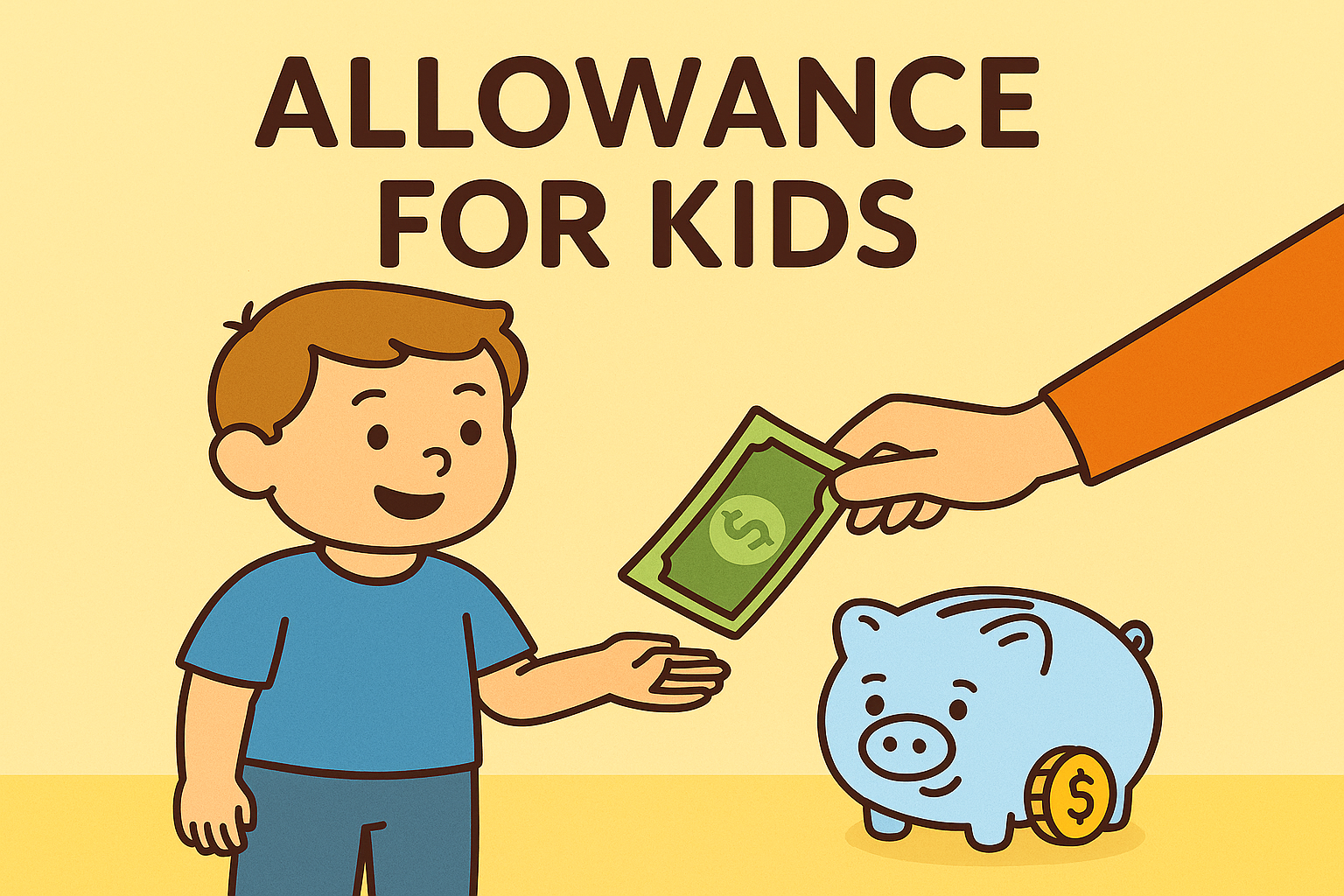How I’m Teaching My 7-Year-Old About Money – One Allowance at a Time
When it comes to raising financially confident kids, few tools are as effective – and practical – as a simple weekly allowance.
This week, I’m starting an allowance system for my 7-year-old son. After researching approaches and reflecting on what I want him to learn, I’ve settled on a simple yet powerful model: a base allowance tied to age, with the option to earn more through extra effort.
Here’s how it works and why I think it strikes the right balance between freedom, responsibility, and fun.
🧠 Why Even Young Kids Need to Learn About Money
Kids don’t learn to manage money by hearing about it. They learn by handling it – by saving for a toy, making small spending decisions, and realizing that money doesn’t grow back overnight.
Giving kids real money, with real choices and real consequences, is one of the best ways to build their financial literacy early. It’s also a great opportunity for parents to talk about values: saving, generosity, patience, and effort.
💡 Our Family’s Allowance System
🎯 1. Base Allowance = Age
My son receives SGD 7 per week, because he’s 7 years old. This is his baseline allowance, and he receives it every week no matter what.
Why unconditional?
Because the goal isn’t to tie money to performance – it’s to teach money management. He’s free to spend, save, or donate as he wishes, and we talk about his decisions each week during a short “money check-in.”
💪 2. Bonus Allowance Through Extra Chores
He also has the opportunity to earn extra money by doing optional chores outside of normal family responsibilities. For example:
- Help clean the windows → +SGD 2
- Organize his closet → +SGD 1
- Water the plants → +SGD 1
These small “side gigs” reinforce the concept that effort creates earnings – a message that will serve him well for life.
📊 Allowance Tracker and Goal-Setting
We use a simple printable StoffelWealth Allowance Tracker that helps him:
- Log what he earns each week
- Track what he spends or saves
- Set goals (like saving up for a LEGO set or book)
🧭 Why I Don’t Tie Chores to the Base Allowance
We chose not to make the allowance dependent on chores because:
- Chores are part of being in a family
- We want to avoid turning every task into a transaction
- Kids need to practice money skills independent of performance
That said, chores still matter, and optional paid tasks offer a natural way to connect work with reward, without turning the entire home into a job site.
💸 From Saving to Investing: Planting the Seeds of Wealth
It may start with coins in a jar or a few bills in a wallet, but the habit of saving is the first real step toward investing. Kids who learn to save regularly develop patience, planning skills, and the ability to think beyond instant gratification – all of which are essential for becoming successful long-term investors.
When your child saves for something bigger – a toy, a book, or even just a future treat – they’re beginning to understand the concept of delayed rewards. This is the same mindset that, later in life, turns saving into investing – where money is set aside not just for spending, but to grow and work for them over time.
By making saving part of your allowance routine, you’re helping your child build the foundation for financial independence and wealth creation.
❓ Frequently Asked Questions (FAQ)
💬 What’s the right age to start an allowance?
There’s no perfect age, but many parents start around 5 – 7 years old. As soon as your child can grasp the idea of saving and spending, they’re ready to begin learning.
💬 How much should I give?
A popular rule of thumb is 1 dollar (or your local currency) per year of age per week. It scales naturally and gives older kids more budgeting responsibility. You can adjust the amount based on your family’s means and values.
💬 Should I let my child make “bad” spending decisions?
Yes – within reason. Spending all their allowance on candy or a cheap toy teaches cause and effect. These small “failures” are safe opportunities to learn before the stakes are higher.
💬 Should I require saving or donating?
You can introduce the Spend / Save / Give model if you want to guide their money habits early. Some families split each allowance into:
- Spend (50%)
- Save (30%)
- Give (20%)
Or, let your child decide how to allocate funds and gradually guide them toward balance.
💬 Should I give cash or use an app?
For younger kids, physical cash works best – it’s tangible and easier to understand. For older kids, you can try apps like Revolut <18 or iAllowance to help track digitally.
💬 How do I stick to the system?
Pick a weekly allowance day (e.g. Sunday morning or Friday afternoon) and make it part of your routine. Use the tracker to log progress together and build consistency and accountability.
✅ Final Thoughts
This system is simple, flexible, and designed to grow with your child. It’s not about giving your kid a salary – it’s about giving them the space to practice real money decisions.
Money skills are life skills. And by starting young, your child can build the confidence and discipline that will help them for decades to come.
Want to try this system with your own child?
Allowance Tracker
Download this simple “Allowance Tracker” which your children can use to keep track of their allowance.

